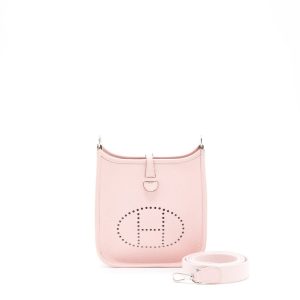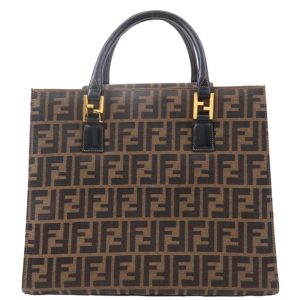The Replica Renaissance: Navigating the Crossroads of Luxury and Ethics
In the hallowed halls of luxury fashion, the artistically crafted designer bag stands as an emblem of refinement, aspiration, and often, exclusivity. However, a rising tide of replica bags has entered the fray, offering a seemingly more democratic pathway to luxury. The dialogue around the purchase and use of replicas has never been more important or polarized. This blog post will wade through the intricate layers of this complex subject, appealing to both fashion aficionados and the casual observer, to paint a comprehensive picture of the replica handbag phenomenon. Whether you're considering a replica as your entry into luxury or grappling with its implications, the following paragraphs will offer insights to inform your decision-making.
The Allure of Designer Bags
Designer bags are not mere accessories; they are investments, heirlooms, and social statements. They occupy a unique space in the fashion ecosystem, transcending trends to become icons of style. The aura of prestige that surrounds luxury bags is a powerful magnet, drawing countless enthusiasts and collectors into the orbit of brands such as Chanel, Louis Vuitton, and Hermès. Each bag is a piece of art, often taking hundreds of hours to craft, and commanding price tags that reflect their exclusivity. The appeal is as much about the history and heritage of the brand as it is about the intricacies of design and the promise of quality.
The Replica Revolution
Once the clandestine pursuits of back-alley workshops, replicas have now emerged into plain view, courtesy of the cyber bazaars that thrive in the digital age. What was once shunned as counterfeit or knockoff is now, in some circles, considered an acceptable form of luxury appreciation. The replica industry has rapidly grown and diversified, with an arsenal of manufacturers that are becoming increasingly skilled at producing products that are near-indistinguishable from their authentic counterparts. This democratization of luxury has made high fashion accessible to a wider audience, challenging the status quo and opening the doors to a new breed of luxury consumer.
The Ethical Debate
The rise of the replica industry has sparked an ethical conundrum that reaches far beyond the personal choice of a shopper. At its core, the production and sale of replica bags are violations of intellectual property and can support nefarious activities. The purchase of a replica can inadvertently fund organized crime, human trafficking, and terrorism. Furthermore, it dilutes the value of the original products and undermines the integrity of the brands. On the other hand, advocates argue that the exorbitant prices of designer items have made them elitist and that replicas can serve as a form of social equalizer, allowing individuals to partake in the aesthetic and cultural benefits of luxury.
Authenticity Unmasked
The differences between a replica and an original extend beyond price and societal validation. Authentic bags are the culmination of brand heritage, investment in research and development, and a commitment to excellence. The choice to invest in an original bag is often as much about the intangible elements — the heritage, craftsmanship, and experience — as it is about the tangible product. From the quality of the materials to the precision of the stitching, authenticity carries with it a guarantee of superior quality. The in-store experience, complete with personal attention and a beautiful space, is an intrinsic value that replicas cannot replicate.
Be Roma and the Replica Renaissance
Be Roma has emerged as a beacon in the replica world, with a dedicated following that rivals that of many authentic brands. Its bags, which are high-quality replicas of designer favorites, have garnered a cult status among those in the know. The brand has navigated a fine line, offering replicas that are not labeled with the original brand's name or logo, skirting the edge of legality and ethics. The Be Roma phenomenon raises intriguing questions about the nature of luxury and the part that exclusivity plays in the consumer’s perception of value.
Identifying Quality Replicas
For those who have considered purchasing a replica, the task of identifying a high-quality one can be daunting. There are several telltale signs that can differentiate a superior replica from a low-quality one, such as the materials used, the accuracy of the design, and the methods of production. Research is key, along with an eye for detail and the ability to make comparisons. Here, we'll provide guidance on what to look for, ensuring that the replica bag you choose meets your standards and aligned with your values.
The Future of Replicas in Fashion
The trajectory of the replica industry is full of uncertainties. As technology advances and consumer habits shift, the position of replicas in the fashion industry will likely evolve. Brands face the challenge of addressing the demand for more affordable luxury while maintaining the exclusivity and integrity of their products. Legislation is also a key player, with intellectual property laws continually adapting to combat counterfeits. It is clear that the discussion surrounding replicas is not a passing trend; it's a conversation that will continue to shape the way we understand and interact with luxury in the modern age.
Your Replica, Your Responsibility
The decision to purchase a replica bag ultimately lies with the individual, and it's not one that should be taken lightly. A thoughtful approach, one that acknowledges the multifaceted nature of the issue, is crucial. Whether you choose to invest in an authentic designer bag, a high-quality replica, or abstain from the luxury market altogether, your choice carries implications that ripple through the industry. It's important to consider not only the immediate gratification of a purchase but also the long-term impact on brands, creators, and all those involved in the fashion supply chain.
Conclusion
The juxtaposition of luxury and replica bags encapsulates the essence of a broader moral dilemma that consumers face in the modern world. It underscores the clash between desire and responsibility, aspiration and pragmatism, access and entitlement. Navigating these waters requires a blend of empathy, education, and personal ethos. It's a conversation that demands continued reflection and engagement from all those with a stake in the fashion domain. Whether you emerge from this discourse with a replica bag on your arm or a newfound appreciation for the exclusive craftsmanship of authentic luxury, the choice is yours, and it's one that will undoubtedly speak volumes about the conscientiousness of your consumerism.




Comments
Post a Comment